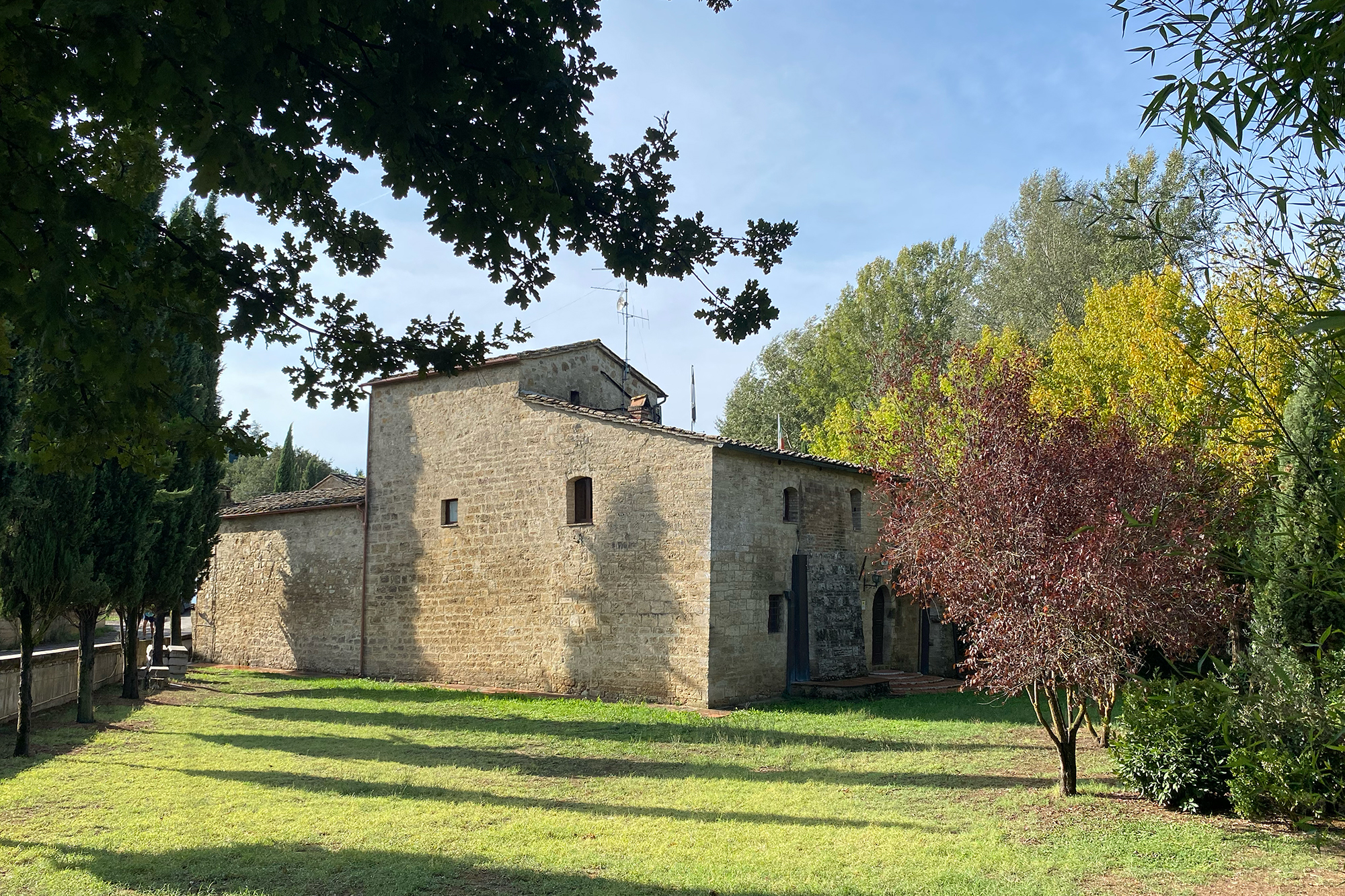
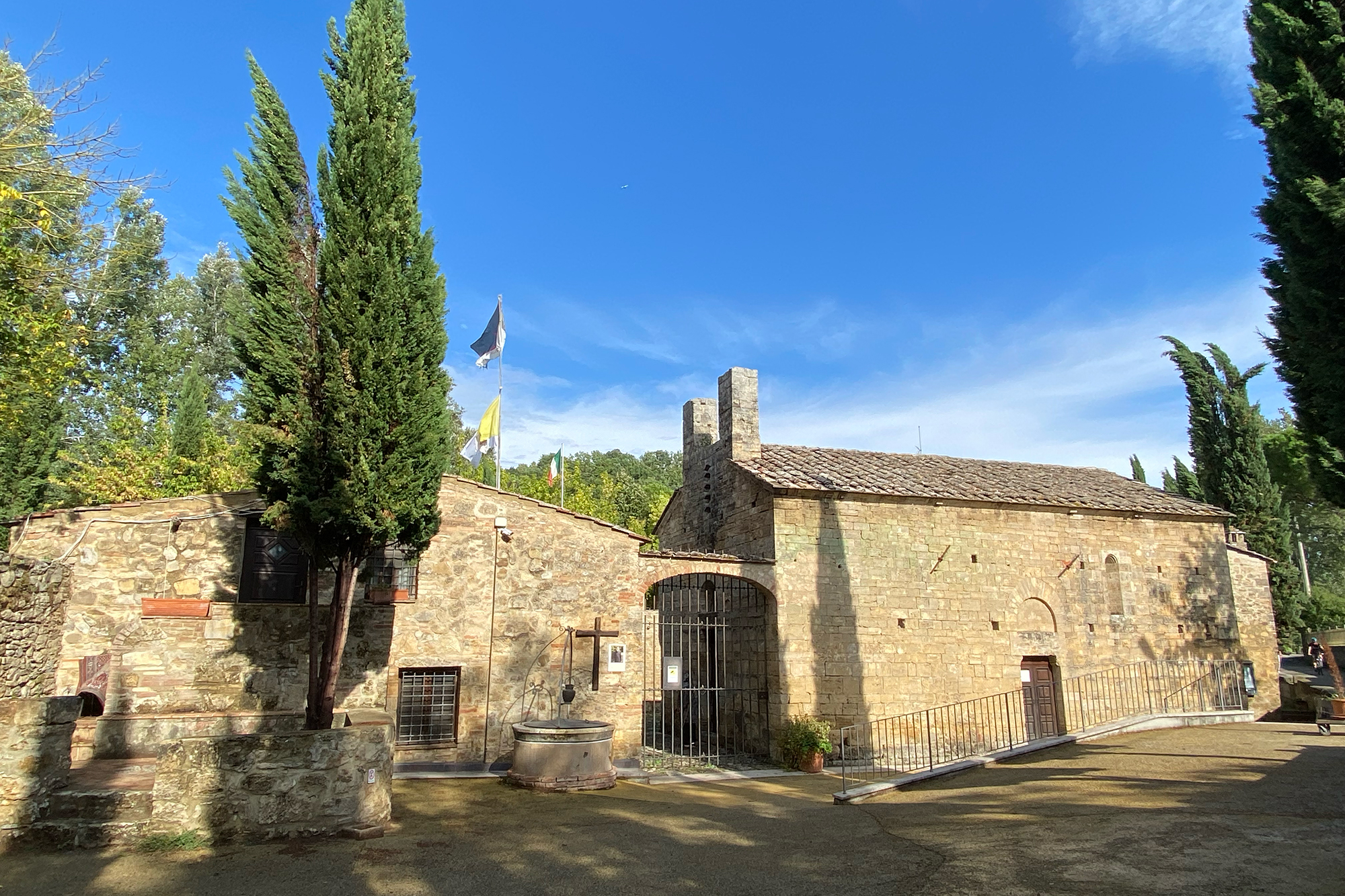
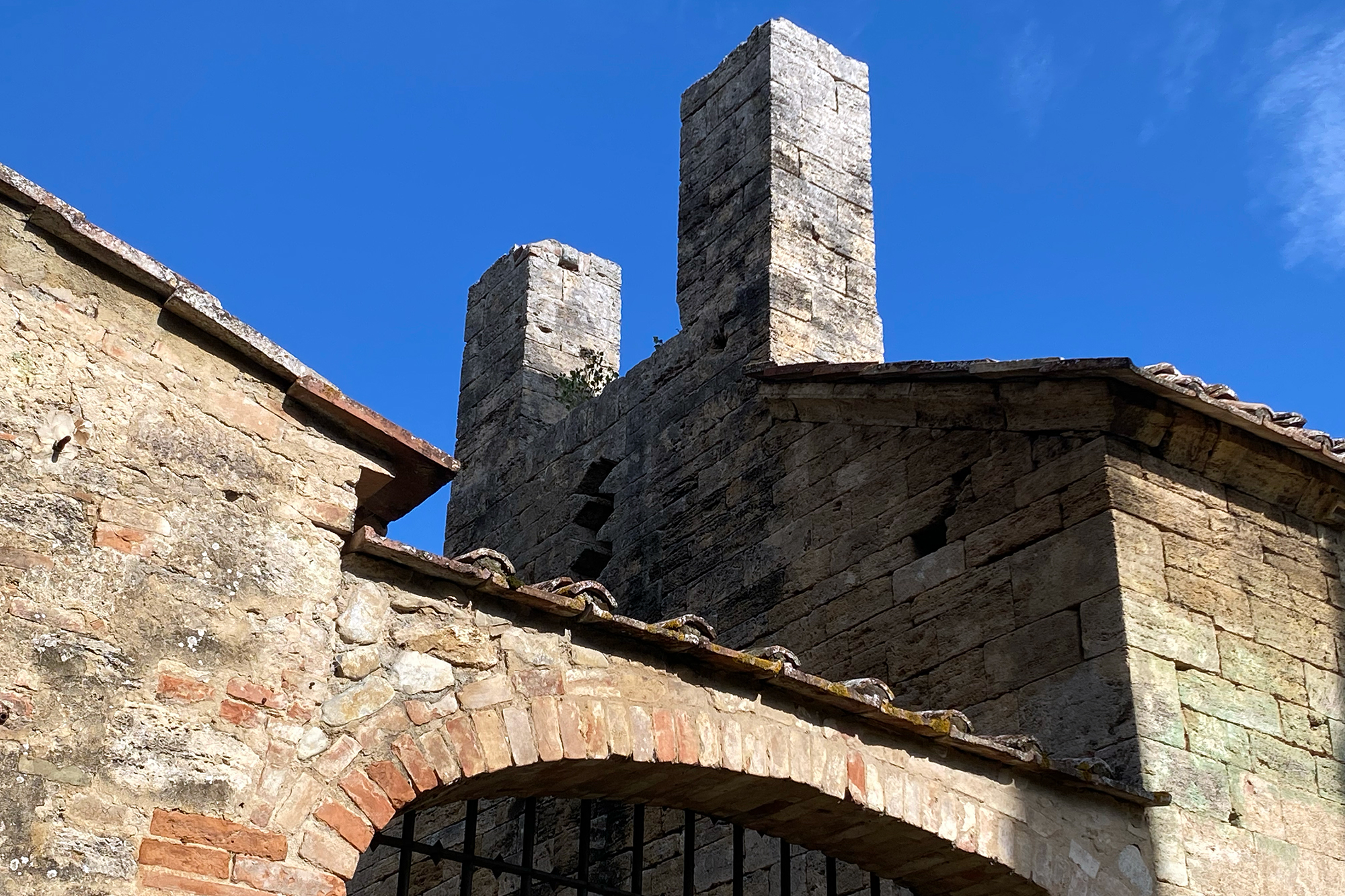
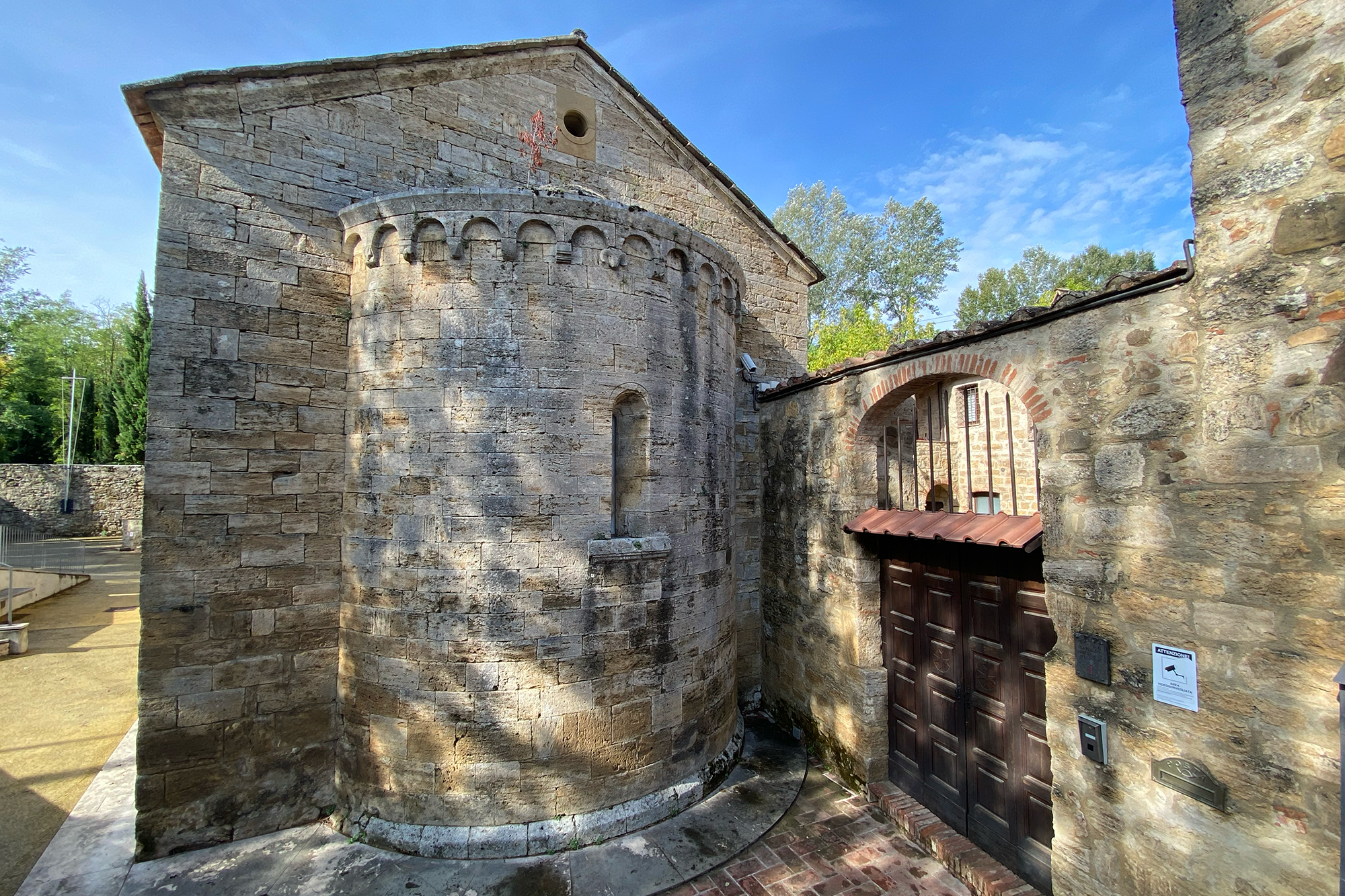
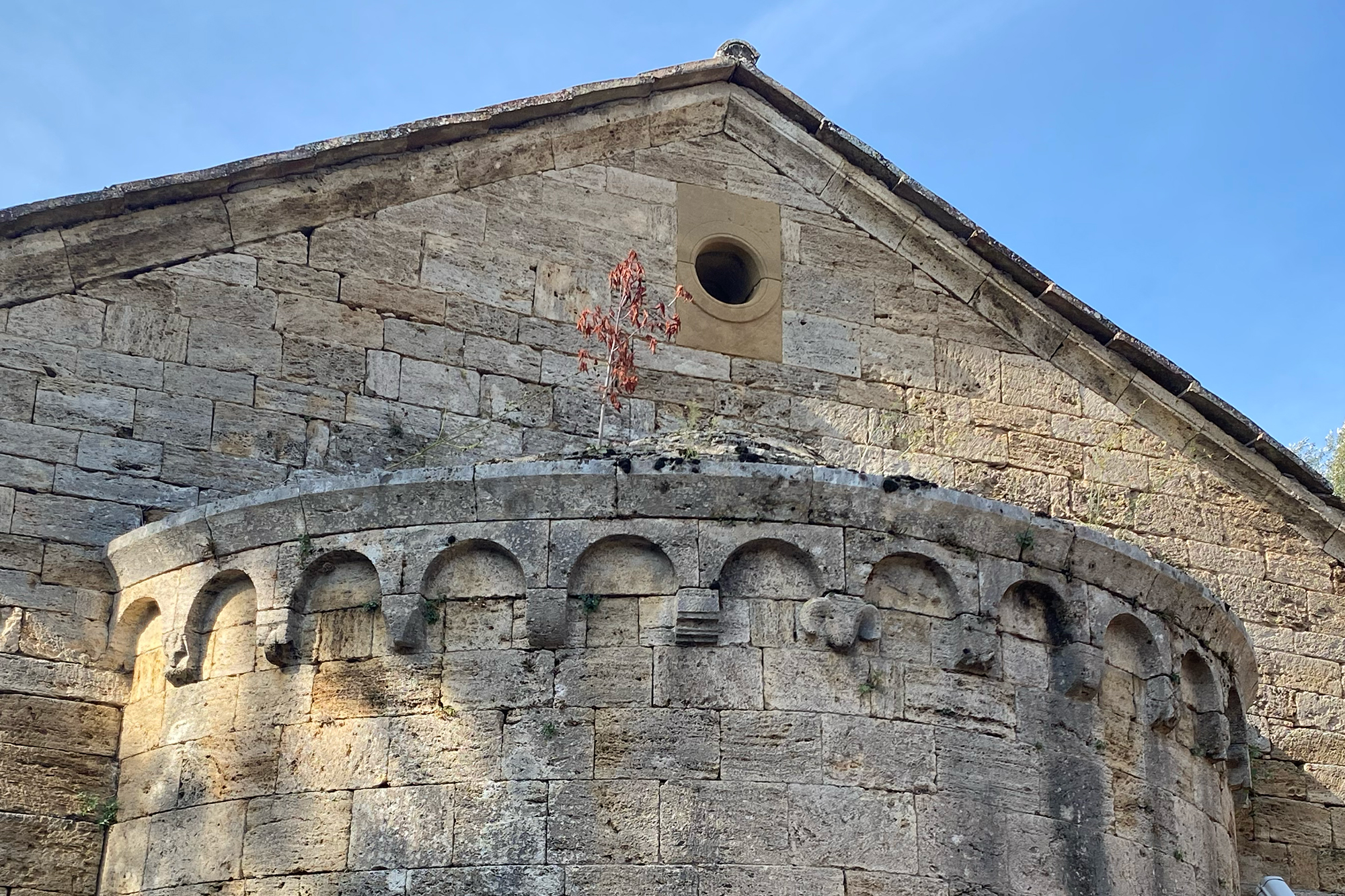
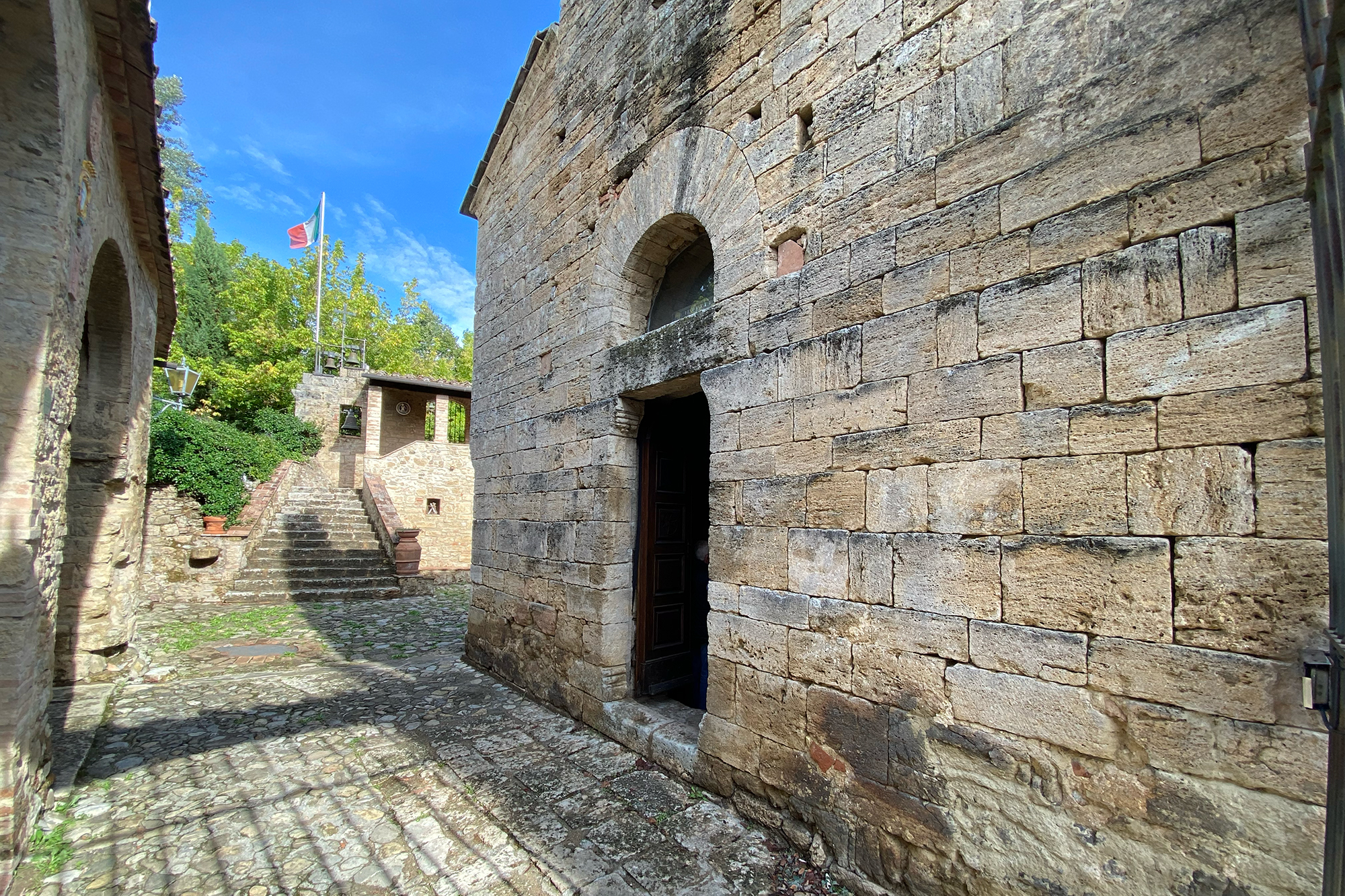






How to reach
The castle is in the Val d'Elsa, in the town of Poggibonsi, between Siena and Florence. It can be easily reached with the motorway Florence-Siena, exit Poggibonsi Sud. From here, follow the direction to Colle Val D'Elsa and you will find the indications for 'Castello della Magione'.
History
The Castle of the Magione di Poggibonsi, also known under the names of 'Magione di San Giovanni al Ponte' or 'Spedale di San Giovanni in Jerusalem alla Magione', stands on the banks of the Staggia stream, along the Via Francigena, an ancient road travelled by pilgrims who stopped at the numerous religious reception centres, including the Spedale di San Giovanni.
The Castle with the annexed Spedale can be dated back to the beginning of the 12th century, the complex initially belonged to the Templars. In 1312, the order was suppressed and it passed to the Ospitalieri di San Giovanni di Gerusalemme, who held it until 1734, when it was granted in emphyteusis to Lorenzo Corsini. In 1817, the property belonged to the complex was confiscated by the State and lost its importance. Reduced to a farm, the castle suffered continuous and considerable damage to the structures due to the frequent flooding of the nearby Staggia stream. In 1979, the entire complex was purchased by Marcello Alberto Cristofani, who restored and donated it to the Milizia del Tempio. The church was reconsecrated for worship on 19 September 1987
The two building structures, the Spedale and the castle, are linked by the defensive walls to form a single complex with a trapezoidal plan, but individually they are separate and distinct, both overlooking a small inner courtyard, and both preserve almost completely unaltered signs of their Romanesque origins. The courtyard is overlooked by the rooms of the ancient pilgrims' quarters, the rooms of the monastery of the knight-monks, the small guest rooms, still in use today, and the staircase for access to the upper floors of the building.
The church, built with pseudo-isodomic masonry in travertine blocks, consists of a simple and austere nave with an apse. One of the two access doors opens on the opposite side, the other door opens on the street side wall, it allowed pilgrims access at night, when all other entrances were closed.
Also from the outside, it is interesting to observe the curious saw-tooth slit, unique in its kind, and the 12 corbels supporting the hanging arches of the apse, each with a different shape, in a repertoire that includes zoomorphic, anthropomorphic and geometric elements. Their meaning is unclear, although the number 12 suggests an astrological significance; at the entrance to the main portal we notice two capitals crowning the corbels of the architrave, they once again amaze with their uniqueness and mysterious significance, one in particular on the right suggests the cross commissa or Tau, the letter of the Greek alphabet; Finally, let us take a look at the shelves in the attic on the street side, we will notice that in some places, they are decorated with simple protruding geometric shapes, seeing them as a whole one wonders why they placed such isolated decorations, although aesthetically connected by the geometrical pattern? The answer can only be partial, in fact, shelves with the same mysterious arrangement can be seen in other similar constructions, but what they were for and what meaning the interlocking geometric symbols had is unclear.
Inside, the nave is divided transversally by the balustrade that marked the boundary between the clergy and the worshipers, originally this wall section was much higher and traces of the original structure are still visible today, the cross-vaulted roof is posterior to the original wooden roof.